Today, I will take you on a journey through time. We are going to the Castle of the Three Kings of the Morro in Havana. This was one of the military fortresses that guarded the entrance to Havana Bay during the colonial era.
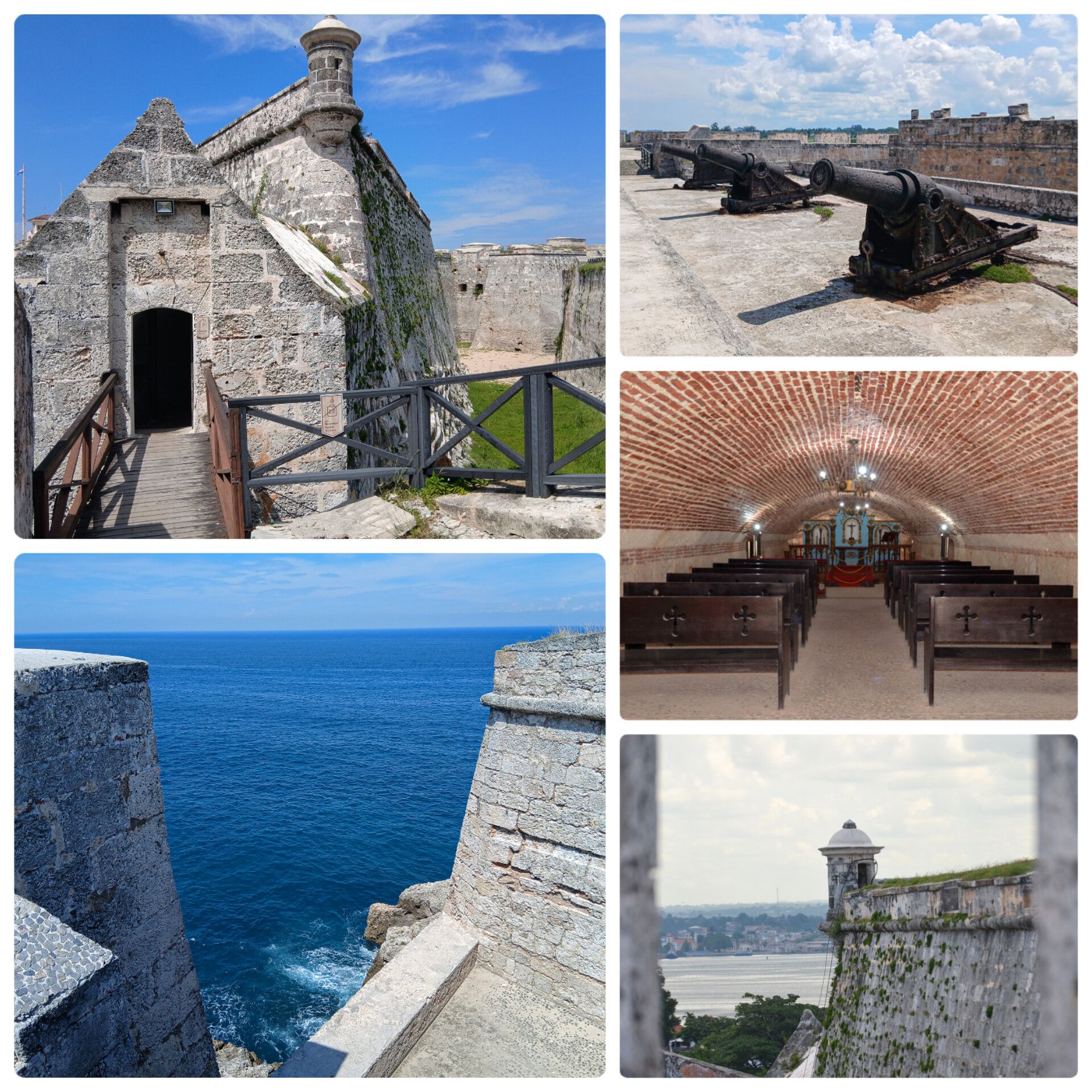
The growing importance of the port of Havana for the New World made it a target for corsairs, pirates, and enemy fleets. For this reason, the government, by order of King Philip II, ordered the construction of a fortress to safeguard its waters. Work began in 1589 and stretched on until 1640. Directed by the Italian engineer Juan Bautista Antonelli, it was carried out using the most advanced concepts of the time. Unfortunately, Antonelli died before the construction was completed.
The fortress was erected, adapting to the natural shape of the headland that served as its base. This was an engineering challenge, but it also added an extra element to its strength. It thus became an irregular polygon with 3 bastions connected by high curtain walls. This was typical of the military architecture of the period and provided a lethal defense system against anyone attempting to scale the walls (curtains), as they would be exposed to crossfire from the bastions.
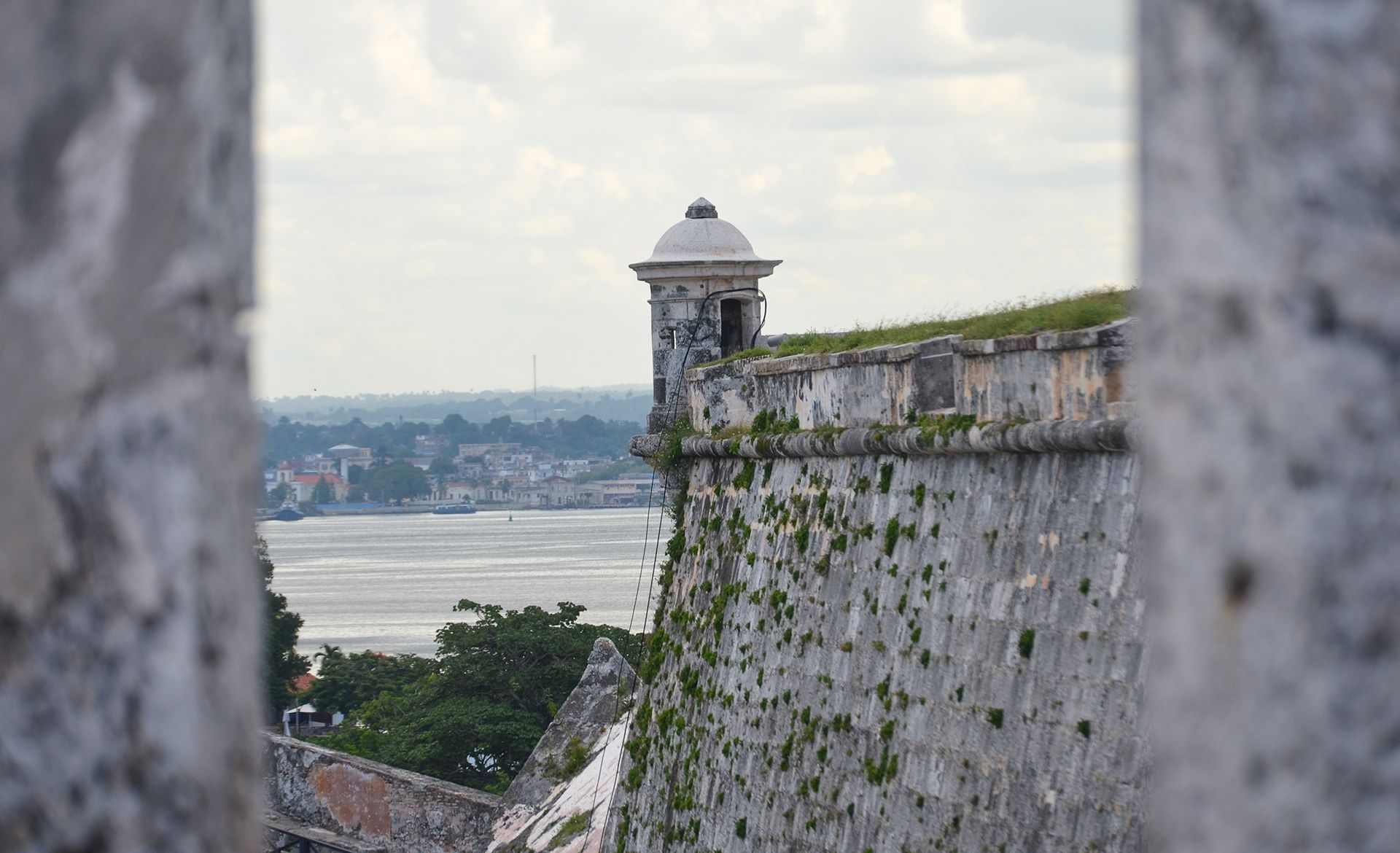

Inside, the casemated barracks (another crucial concept applied in its construction) protected the garrison, provisions, and ammunition from enemy projectiles. Its thick walls and vaulted ceilings were capable of withstanding artillery impacts. It was, in short, a bomb-proof refuge.
The entrance to the Castle is the same as in days of old, except today there is a fixed bridge over the moat; initially, it was a drawbridge. A long passageway of more than 50 meters, equipped with loopholes overlooking the harbor's mouth, strategically positioned its soldiers for defense. After walking through it, we find the entrance door to the barracks. We pass through a short corridor that has a series of rooms on both sides, which once served as storage rooms and officers' quarters. At the end, there is a medium-sized interior courtyard. From there, we continue our tour with a guide.
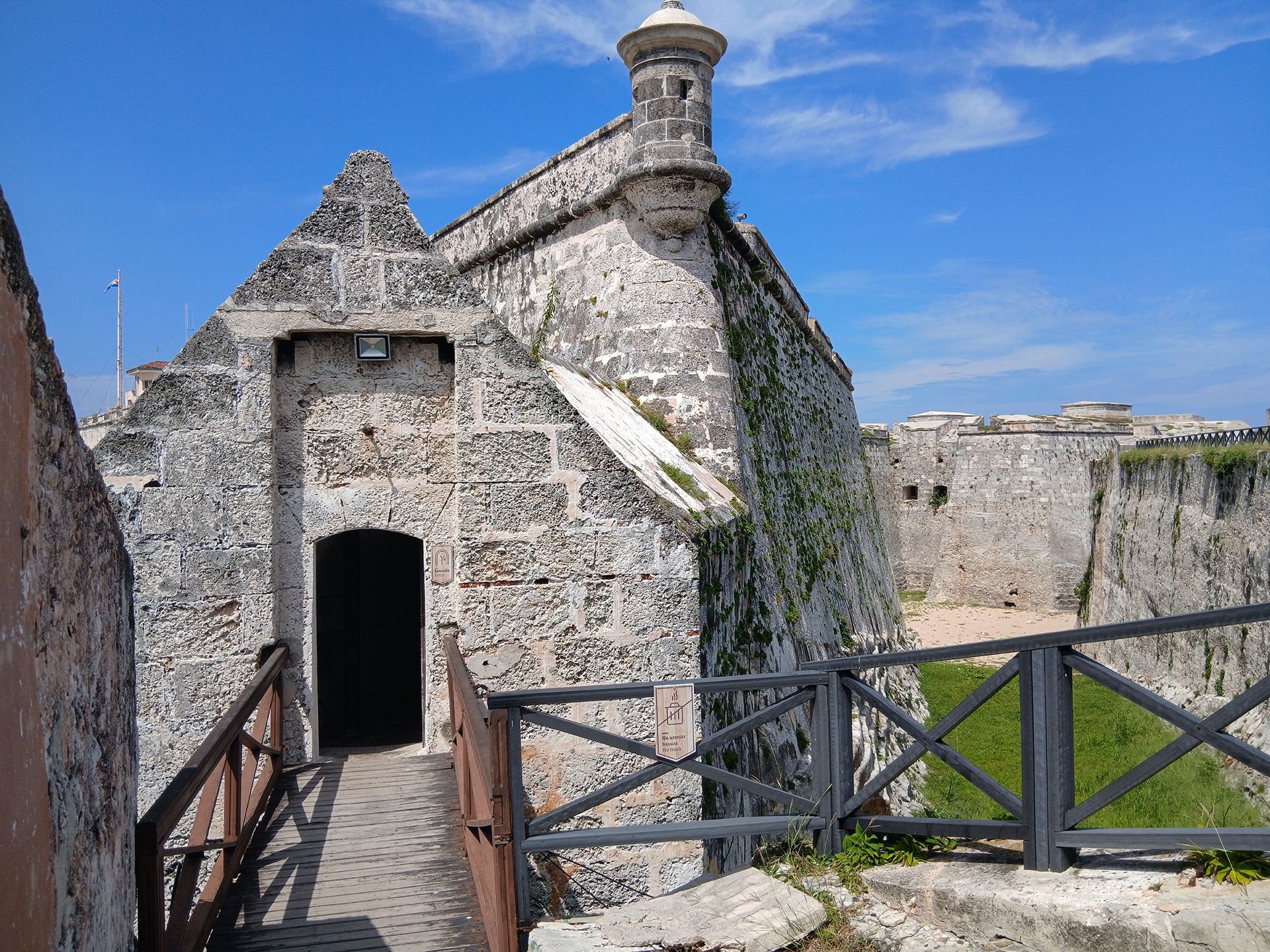

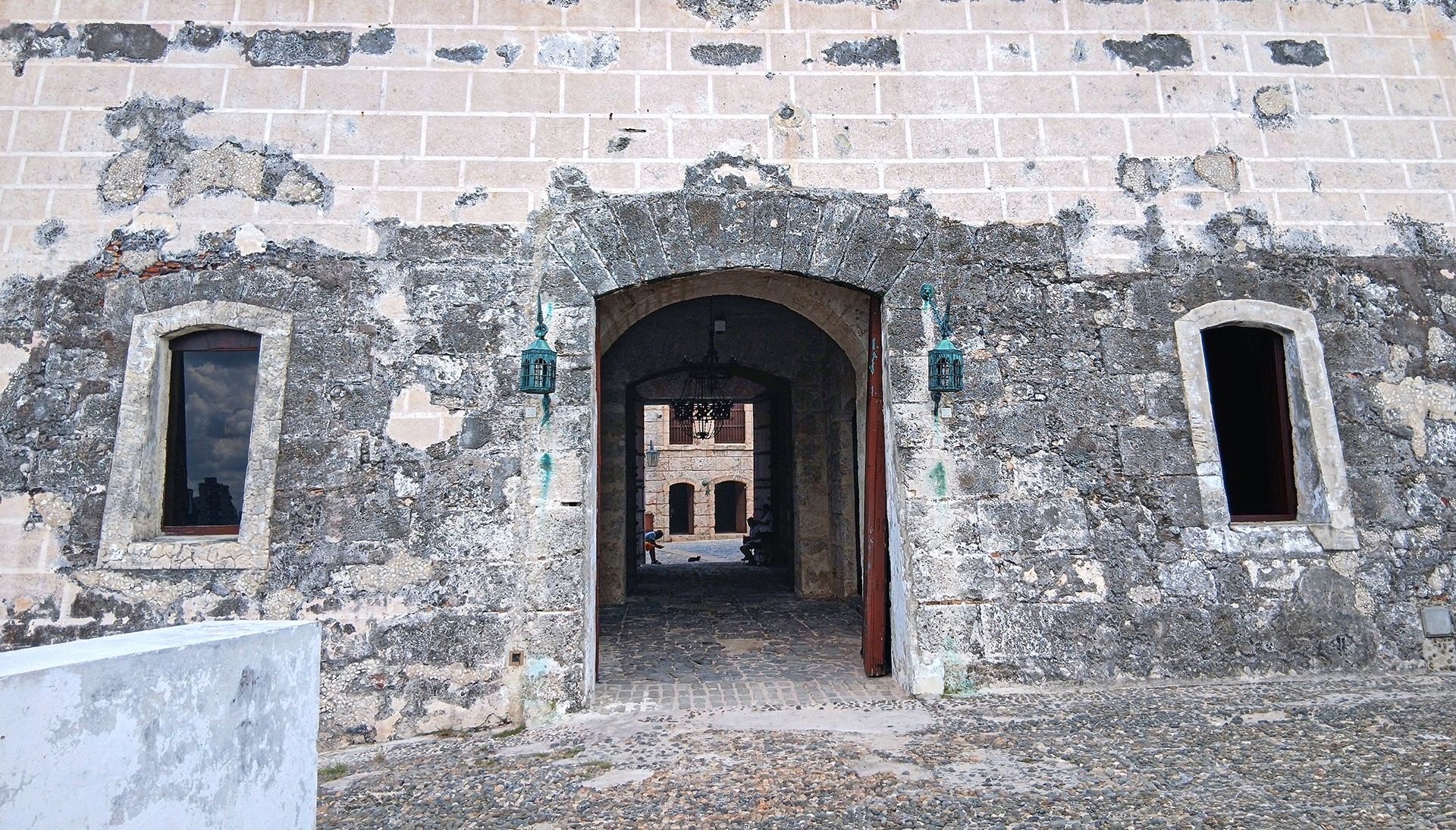
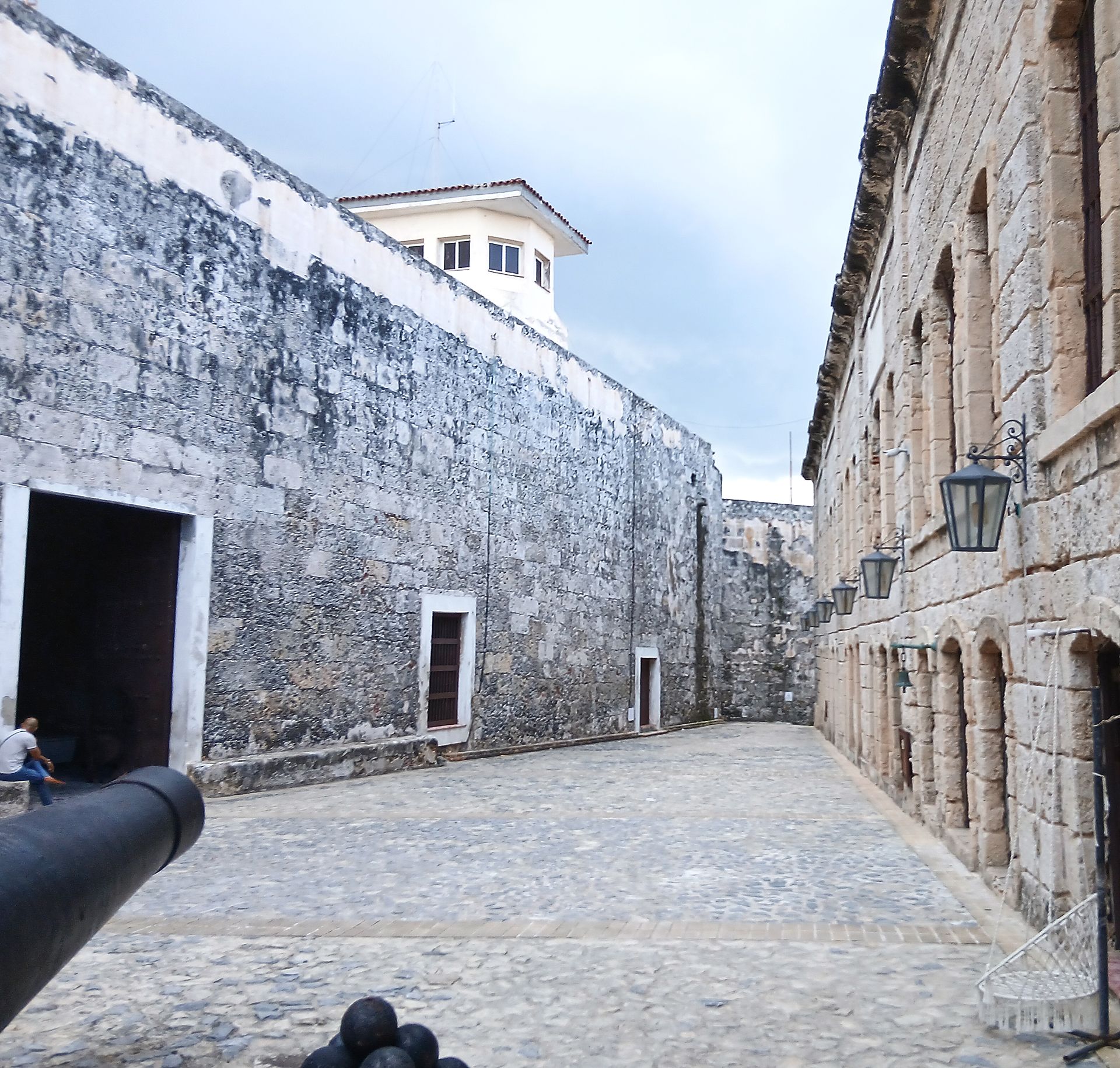
Right in the center of the fortress rises the main building of this construction. With several doors, windows, and low brick vaulted ceilings, these rooms housed the chapel, dormitories for the soldiers, the hospital, storage rooms, and quarters. Today, it houses a small museum, a crafts fair, several administrative offices, and the chapel, which still occupies its original place. In this chapel, as expected given the fortress's name, the Three Wise Men were worshipped. From this building, troops ascended via a spiral staircase to the Parade Ground located on the upper level.
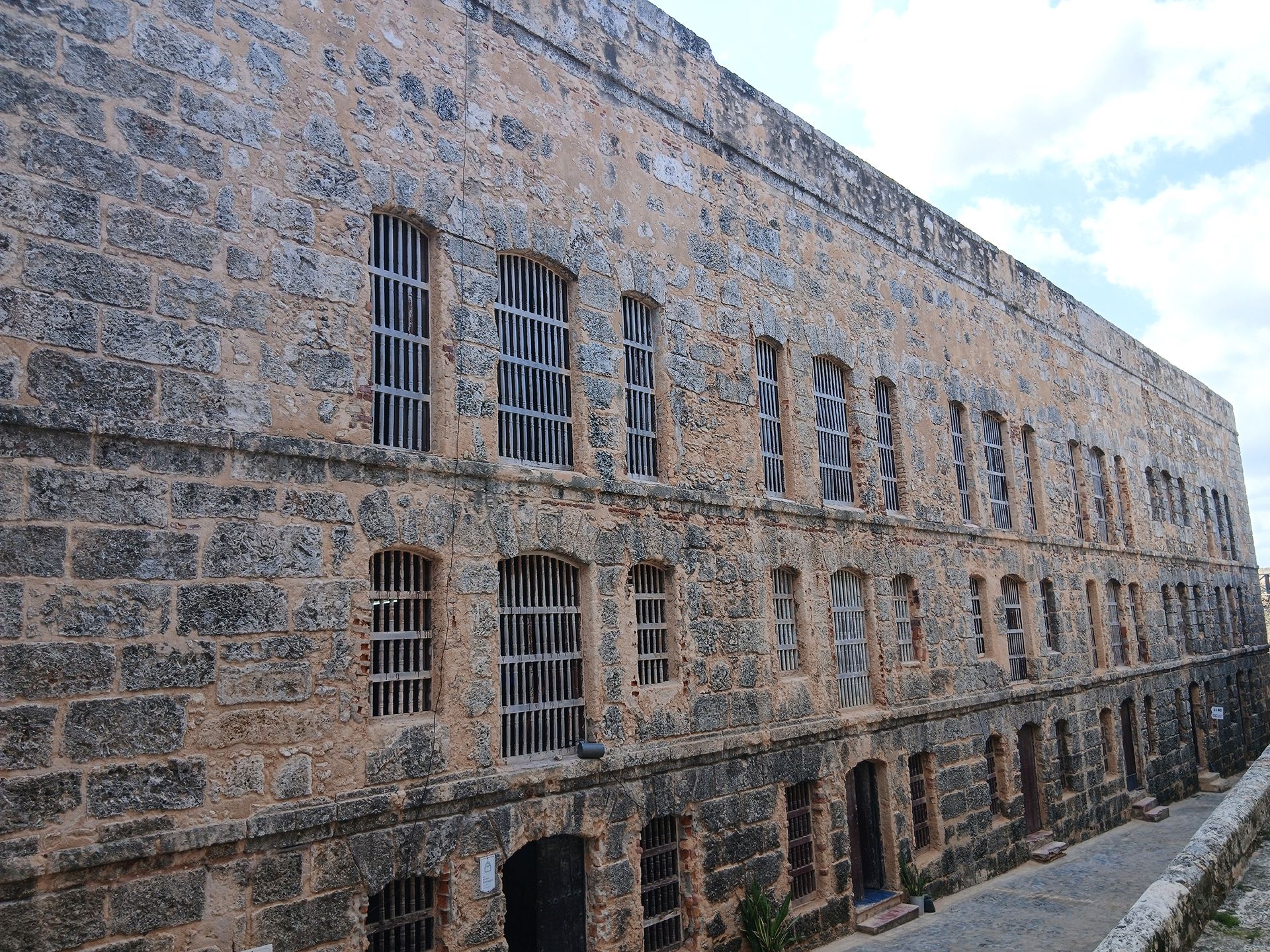

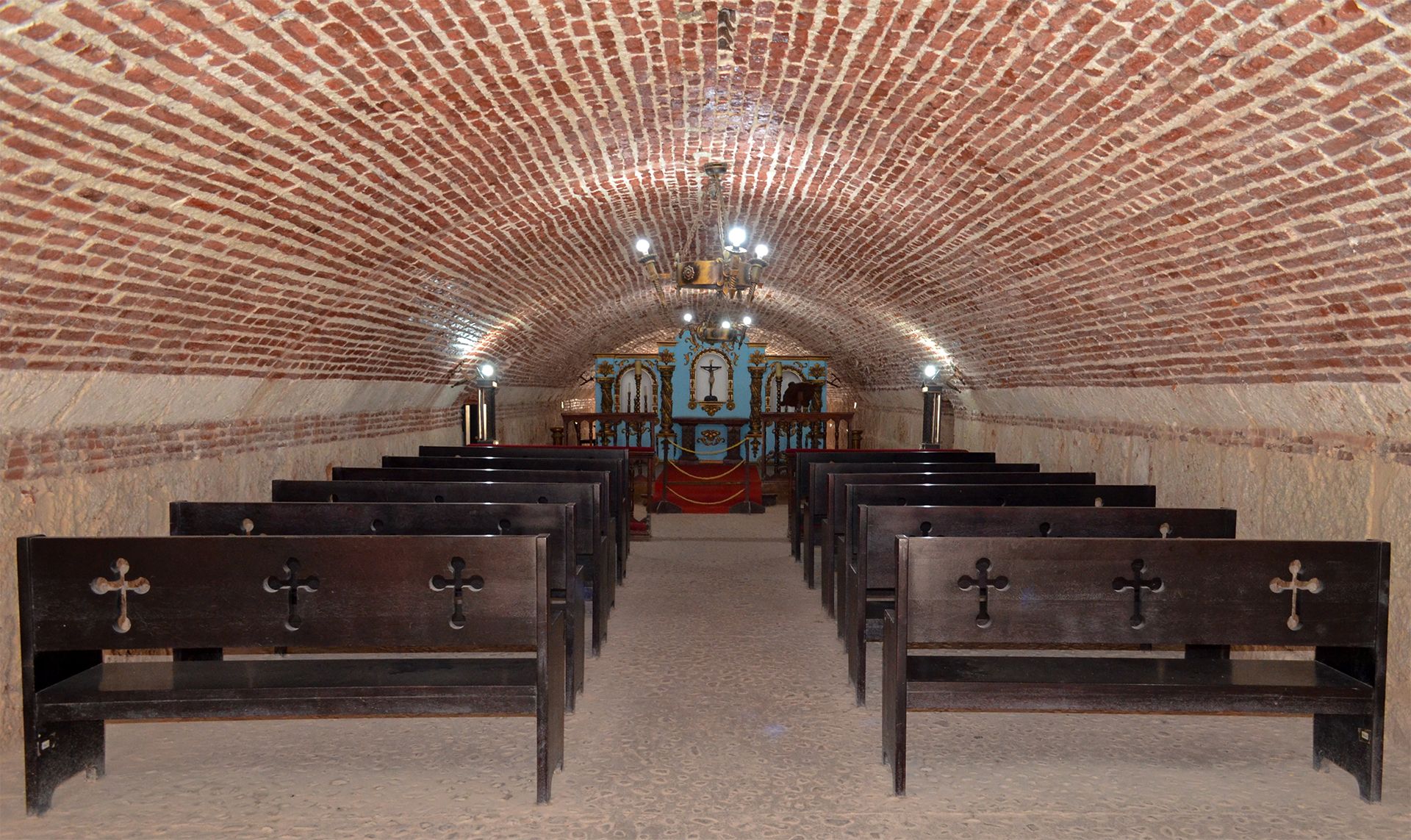

On the side of the main building, in the area I show in the image, was, according to our guide, a large cistern used to store drinking water. Its large size ensured a sufficient reserve even if they were under siege for a long time. There was a second cistern just like this one on the other side of the building.
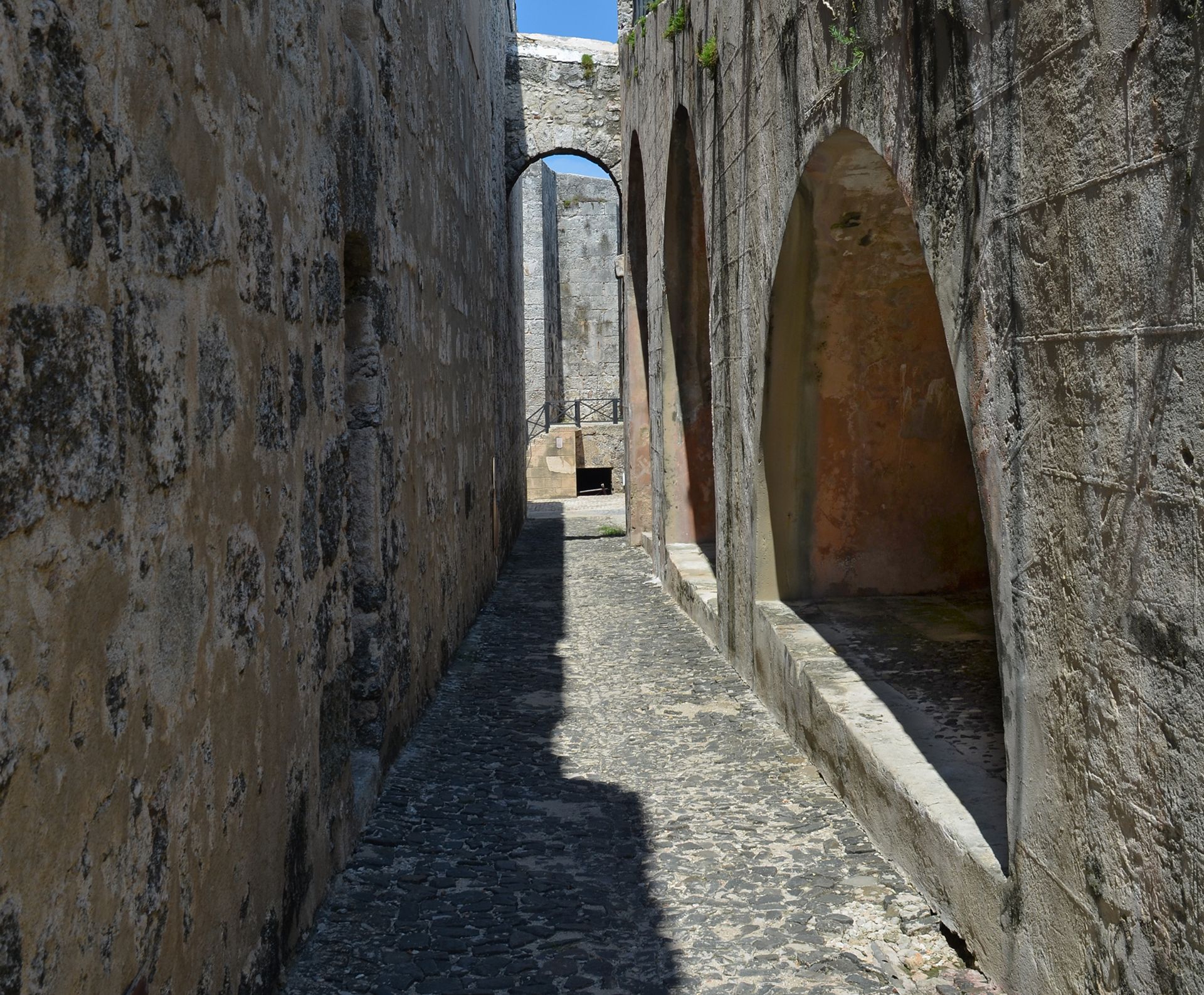
At the rear, with a view of the North Sea, we found a gallery with several rooms. These were intended for artillery soldiers to defend the main building's facilities from this position in case of an attack. We can still see some cannons that illustrate how they must have been placed in those days. On the upper level of this gallery is the Santo Tomás cannon battery. It is incredible to see how remnants of the system used to move and aim the cannons are still preserved.

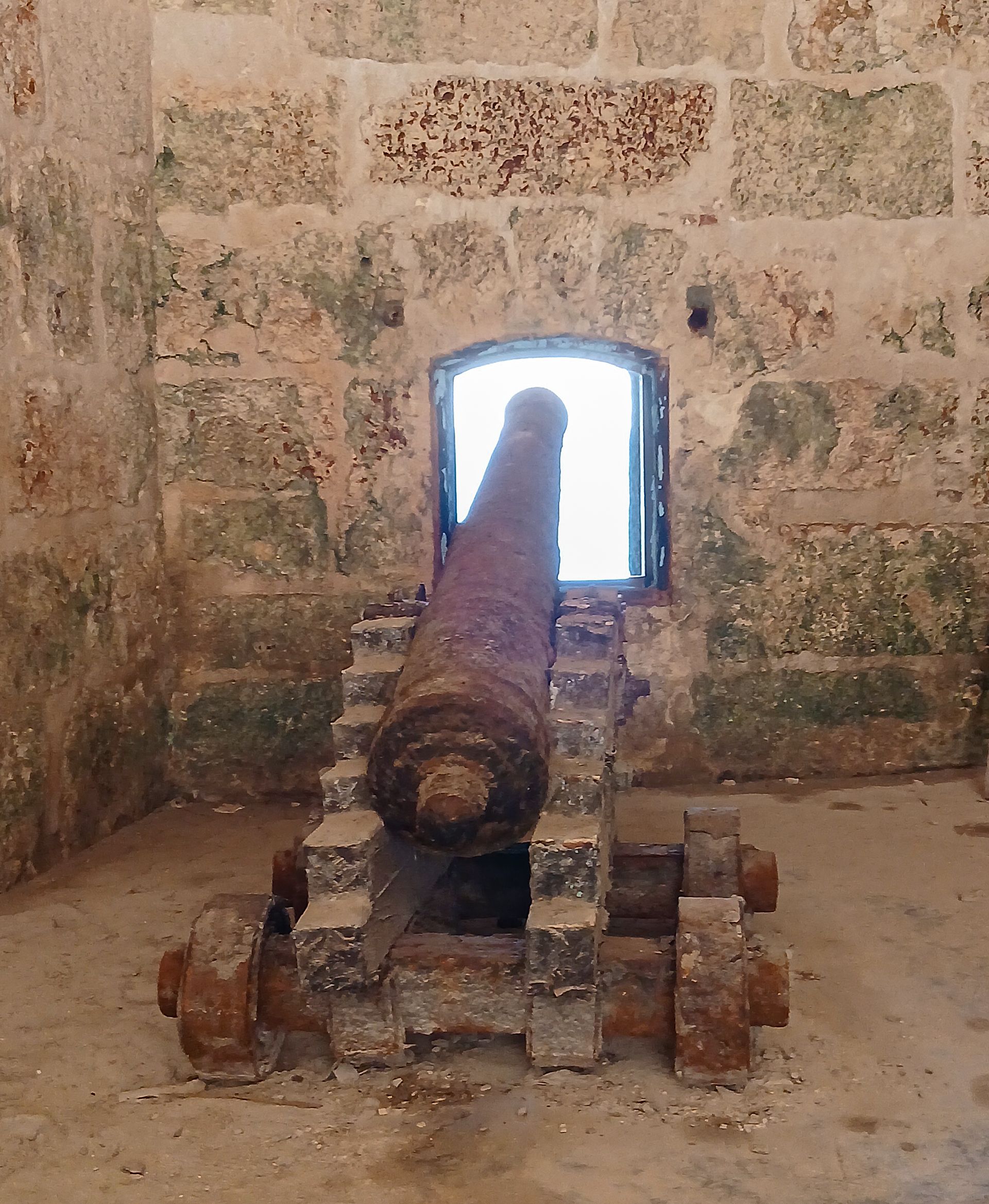


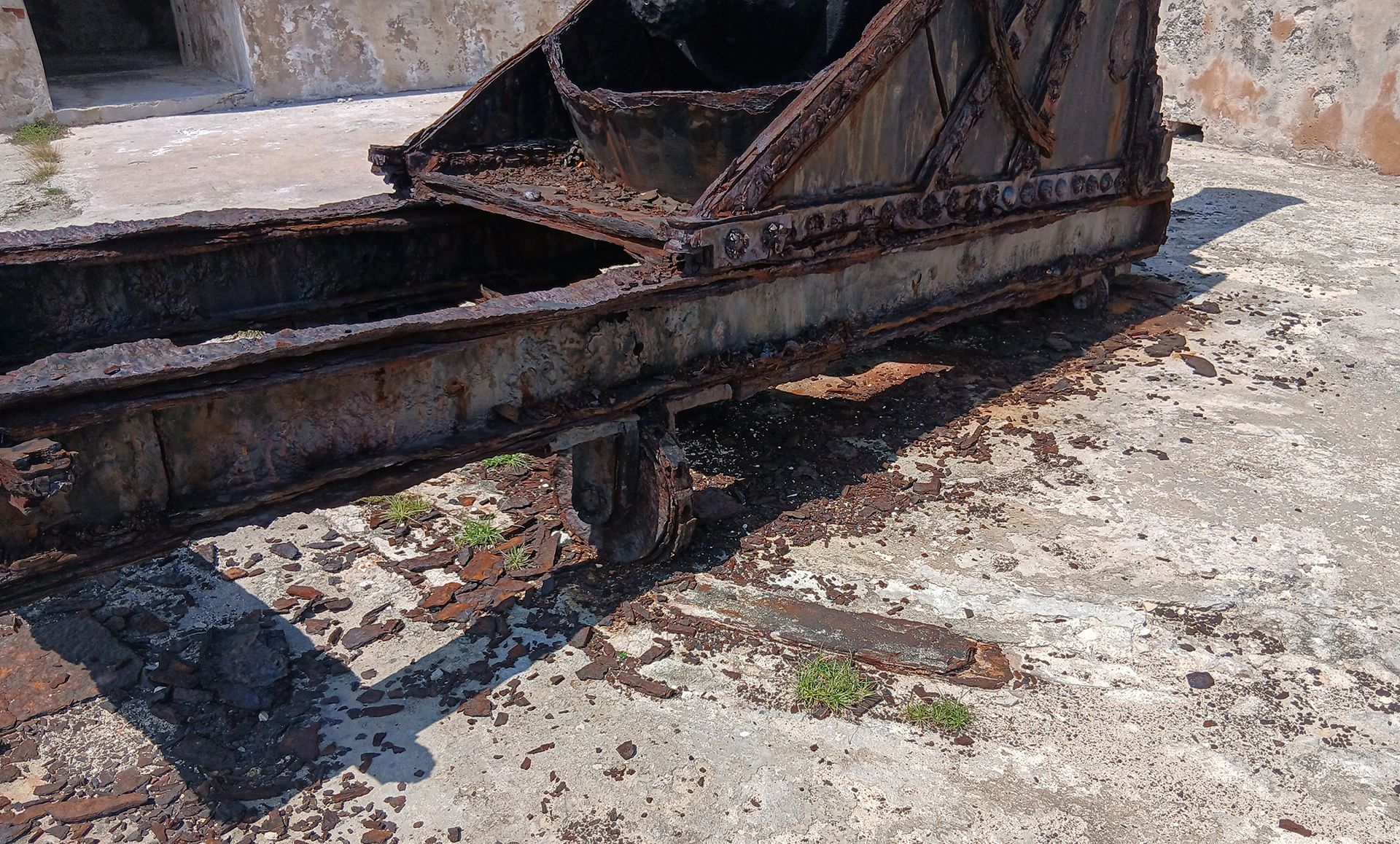
Other strategically placed batteries served in defense. The High and Low Morrillo batteries, positioned to the west. Outside the fortress perimeter and aimed at the harbor mouth two large batteries of 12 cannons each, Los 12 Apóstoles and the Divina Pastora, complemented the castle's firepower which remained undefeated for over a century.

It was on July 30, 1762, after 29 days of direct siege and having been attacked at its most vulnerable point—from the hills to the east—that El Morro fell. The death of Captain General Don Luis Vicente de Velasco e Isla was a severe blow and led to the surrender of the troops.
The English raised their flag and established their command post within these walls. They bombarded the city from here, which resisted as long as it could. Havana fell into English hands on August 12, 1762, and 11 months later, it would once again become a Spanish colony.
The Morro Castle was devastated after the English attack. Reconstruction work would be carried out after their departure, and an unmistakable icon of our city would emerge: its Lighthouse. I will dedicate my next post to this; stay tuned 😉.
Castillo de los Tres Reyes Magos del Morro de La Habana
Hoy los llevaré a viajar en el tiempo. Iremos al Castillo de los Tres Reyes Magos del Morro de La Habana. Una de las fortalezas militares que custodiaba la entrada de la bahía habanera en la época colonial. La creciente importancia que adquirío para el Nuevo Mundo el enclave portuario de La Habana, hizo que se convirtiera en blanco de ataques de corsarios, piratas y flotas enemigas. Por tales motivos el gobierno, por orden del Rey Felipe II, mandó construir una fortaleza que salvaguardara sus aguas. Las obras comenzaron en 1589 y se entendieron hasta 1640. Dirigidas por el ingeniero italiano Juan Bautista Antonelli, se llevaron a cabo aplicando los conceptos más avanzados de la época. Lamentablemente Antonelli murió antes de que se terminara la construcción. La fortaleza se erigió ajustándose a la forma natural del morro que le servío de base. Fue un desafío de ingeniería, pero a la vez, aportaba un elemento extra a su fortaleza. Así devino en un polígono irregular con 3 baluartes unidos por altas cortinas. Esto era propio de la arquitectura militar de la época y proporcionaba un sistema de defensa letal contra cualquiera que intentara subir por los muros (cortinas) ya que quedaban expuestos al fuego cruzado desde los baluartes. En su interior el cuartel acasamatado (otro concepto crucial aplicado en su construcción) protegía a la guarnición, los víveres y las municiones de los proyectiles enemigos. Sus anchos muros y sus techos abovedados eran capaces de resistir los impactos de artillería. Era en definitiva, un refugio a prueba de bombas. La entrada al Castillo es la misma desde antaño, solo que hoy hay un puente fijo sobre el foso, en sus inicios era un puente levadizo. Un largo pasillo de más de 50 metros, dotado de aspilleros con vista a la boca del puerto, posicionaba estratégicamente a sus soldados para la defensa. Después de recorrerlo encontramos la puerta de entrada al cuartel. Atravesamos un corto pasillo que a ambos lados tiene una serie de habitaciones que otrora sirvieron de almacenes y habitaciones para los oficiales. Al final hay un patio interior de tamaño mediano. Desde allí seguimos nuestro recorrido con un guía. Justo en el centro de la fortaleza se eleva el edificio principal de esta construcción. Con varias puertas, ventanas y techos bajos de ladrillos en forma de bóvedas, estas estancias albergaban la capilla, los dormitorios para los soldados, el hospital, almacenes y cuarteles. Hoy se encuentra un pequeño museo, una feria de artesanía, varias oficinas administrativas y la capilla que sigue ocupando su lugar original. En esta capilla, como es de esperarse por el nombre de la Fortaleza, se adoraba a los Tres Reyes Magos. Por este edificio, a través de una escalera de caracol, las tropas subían a la Plaza de Armas que se encontraba en la parte superior. En el lateral del edificio principal, en la zona que muestro en la imágen, se encontraba según nuestro guía un gran aljibe que servía para almacenar el agua potable. Su gran tamaño aseguraba tener una reserva suficiente aunque estuvieran sitiados mucho tiempo. Igual a este había un segundo aljibe en el otro lado del edificio. En la parte trasera y con vista al mar del norte pudimos encontrar una galería con varias habitaciones. Estas estaban previstas, para en caso de ataque, los soldados artilleros defendieran desde esta posición las instalaciones del edificio principal. Aún podemos ver algunos cañones que ilustra como debieron estar colocados en aquella época. En la parte superior de esta galería está la batería de cañones Santo Tomás. Es increíble ver como aún se conservan restos del sistema que servía para mover y direccionar los cañones. Otras baterías estratégicamente dispuestas servían de defensa. La del Morrillo alto y bajo, que se posicionaban por el oeste. Fuera del perímetro de la fortaleza y apuntando hacia la boca del puerto 2 grandes baterías de 12 cañones cada una, los 12 Apóstoles y la Divina Pastora, complementaban el poder de fuego del castillo que se mantuvo imbatible por más de 1 siglo. Fue el 30 de Julio de 1762 tras 29 días de asedio directo y atacado por la parte más vulnerable que tenía la fortificación, desde las colinas que se encontraban al este, el Morro cayó. La muerte del capitán general Don Luis Vicente de Velasco e Isla fue un duro golpe y provocó la rendición de las tropas. Los ingleses izaron su bandera y establecieron su puesto de mando entre estos muros. Bombardearon desde aquí la ciudad, que resistió lo que pudo. La Habana cayó en manos inglesas el 12 de Agosto de 1762 y 11 meses después, volveríamos a ser colonia española. El Castillo del Morro quedó devastado tras el ataque inglés, obras de reconstrucción se llevarían a cabo después de la partida de estos y surgiría un ícono inconfundible de nuestra ciudad, su Faro. A este dedicaré mi próxima publicación, estén atentos 😉.
All rights reserved on the text and images, which are of my authorship unless otherwise indicated. I use DeepL for translation because my English is very bad 🤭.
Derecho reservado sobre el texto y las imágenes, que son de mi autoría a no ser que indique lo contrario. Uso DeepL para la traducción porque mi Inglés es muy malo 🤭.